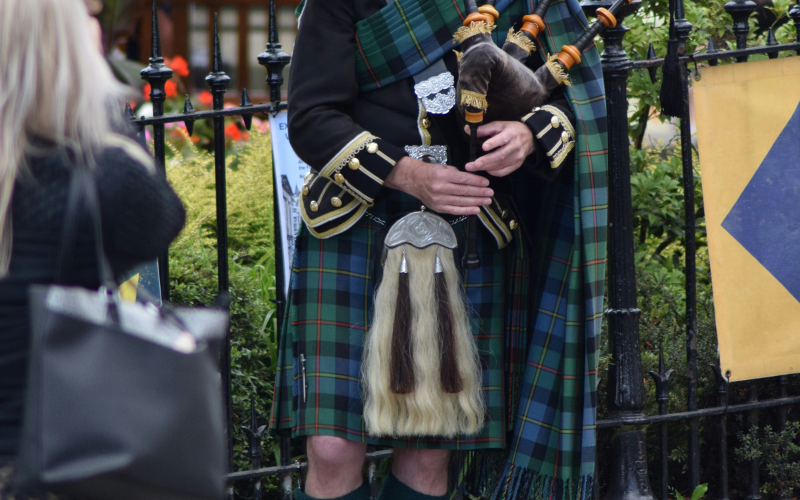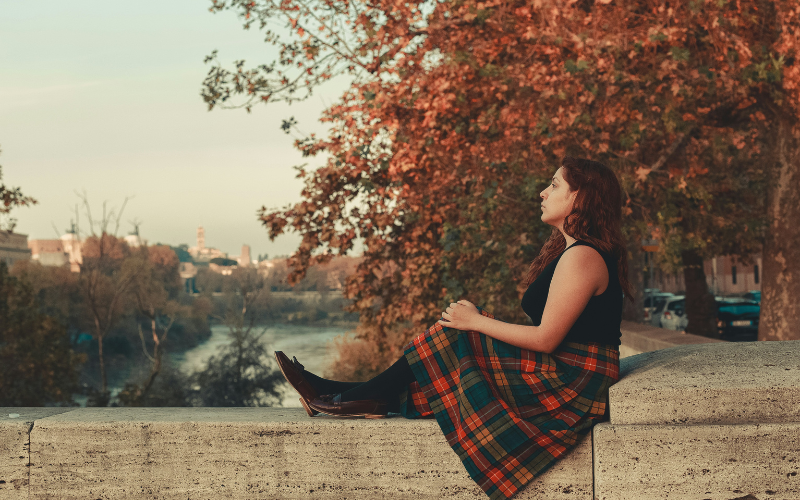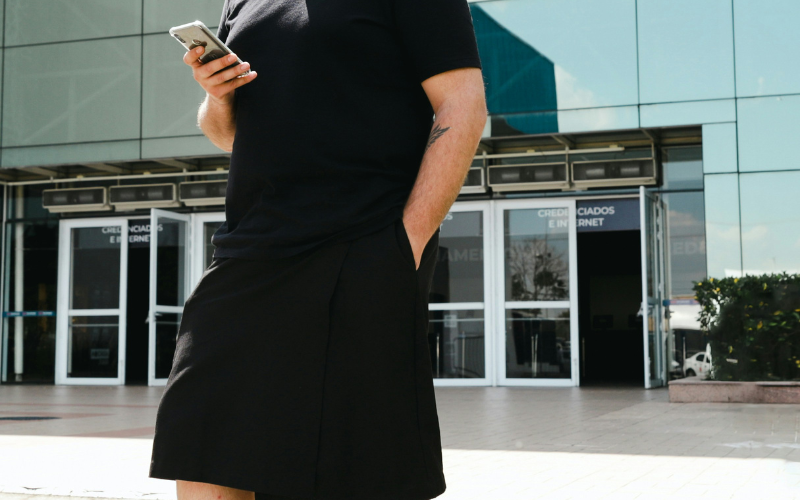The traditional Irish kilt is a garment that holds deep cultural significance and is often associated with Scottish kilts. However, the Irish kilt has its own unique history and characteristics. In this article, we will explore the origins, design, and cultural significance of the traditional Irish kilt. From its ancient Celtic roots to its modern-day use in Irish step-dancing and weddings, the Irish kilt is a symbol of Irish heritage and pride.
Origins of the Irish Kilt
The origins of the Irish kilt can be traced back to the ancient Celtic tribes that inhabited Ireland. Centuries ago, these tribes donned a flowing attire known as a “brat,” resembling today’s kilt. Crafted from wool and elegantly draped over a shoulder, the brat gradually transformed into the contemporary Irish kilt.
Another influence on the development of the Irish kilt came from Scottish Highlanders who immigrated to Ireland in the late 19th and early 20th centuries. These Scottish immigrants brought their kilts with them and influenced the design and construction of the Irish kilt. As a result, the Irish kilt shares many similarities with its Scottish counterpart, such as the pleated design and the use of tartan patterns.

Design and Construction of the Irish Kilt
The traditional Irish kilt is typically made of solid-colored wool and is not associated with any specific clan or family, unlike Scottish kilts which use tartan patterns to represent different clans. The most common colors for Irish kilts are green, navy, and black. The kilt is a tailored garment that is wrapped around the wearer’s body at the natural waistline, starting from one side and crossing over to the opposite side. The fastenings consist of straps and buckles on both ends, with the strap on the inside passing through a slit in the waistband to be buckled on the outside.
Enveloping the lower body from the waist to the midpoint of the knees, the kilt provides traditional and distinctive coverage.The overlapping layers in the front are called “aprons” and are flat, while the single layer of fabric around the sides and back is pleated. The pleats can be arranged in different ways, either pleating to the stripe or pleating to the sett. Pleating to the stripe means that one of the vertical stripes in the tartan pattern is selected and the fabric is folded so that this stripe runs down the center of each pleat. Pleating to the sett, on the other hand, maintains the pattern of the tartan and repeats it all around the kilt.
Cultural Significance of the Irish Kilt
The Irish kilt holds great cultural significance and is often worn for tradition.Originating in 18th-century Ireland, Irish step-dancing stands as a time-honored and traditional dance form with deep cultural roots. It is characterized by rapid foot movements and a straight posture, with dancers typically wearing a traditional Irish costume, including an Irish kilt.
In addition to step-dancing, Irish kilts have also become popular attire for weddings and other special occasions. In recent years, many grooms have chosen to wear anThe Irish kilt holds great cultural significance and is often wo Irish kilt as a way to connect with their Irish heritage and stand out from the crowd. Wearing an Irish kilt at a wedding is a symbol of pride in one’s Irish roots and a way to honor Irish traditions.
Types of Irish Kilts
There are several different types of Irish kilts, each with its own unique features. One of the most traditional types is the Great Kilt, also known as the Feileadh Mòr. The Great Kilt is made from a single piece of wool fabric that is pleated and wrapped around the body. It is typically worn with a shirt, jacket, and waistcoat.
Another type of Irish kilt is the Fly Plaid Kilt, which features a long piece of fabric, known as a fly plaid, that is draped over one shoulder and fastened with a brooch. This style of kilt adds an extra element of elegance and formality to the wearer’s attire.
For more casual occasions, there is the Casual Kilt, which is a more modern type of Irish kilt made from lightweight fabric. It is often worn for festivals, sporting events, or everyday wear.

Buying an Irish Kilt
If you’re interested in owning an Irish kilt, it’s important to choose a reputable kilt maker who understands the craftsmanship and traditions associated with this iconic garment. At USA Kilts, we take pride in being one of the largest kilt makers in the USA, crafting traditional Irish kilts with the highest quality standards.
When purchasing an Irish kilt, it is essential to have accurate measurements taken to ensure a perfect fit. Each kilt we make is customized to the precise measurements of the wearer, ensuring both comfort and authenticity. Our experienced kilt makers go through rigorous training to learn the craft and pay meticulous attention to detail in every kilt they create.
Maintaining and Caring for Your Irish Kilt
To keep your Irish kilt in pristine condition, it’s important to follow proper care instructions. Most Irish kilts are made from wool, which requires special care. It is recommended to dry clean your kilt to maintain its shape and quality. Avoid washing it in a washing machine, as this can cause shrinkage and damage to the fabric.
When storing your Irish kilt, hang it up in a cool, dry place to prevent wrinkles and maintain its pleats. It’s a good idea to use a garment bag or a kilt hanger to protect it from dust and other potential damages.
Conclusion
The traditional Irish kilt is a symbol of Irish heritage and pride. With its roots in ancient Celtic culture and influences from Scottish kilts, the Irish kilt is a unique and elegant garment. Whether worn for Irish step-dancing, weddings, or everyday wear, the Irish kilt represents a connection to Irish traditions and serves as a statement of cultural identity. When purchasing an Irish kilt, choose a reputable kilt maker like USA Kilts to ensure the highest quality and craftsmanship. With proper care and maintenance, your Irish kilt will be a cherished part of your wardrobe for years to come.




Leave a reply